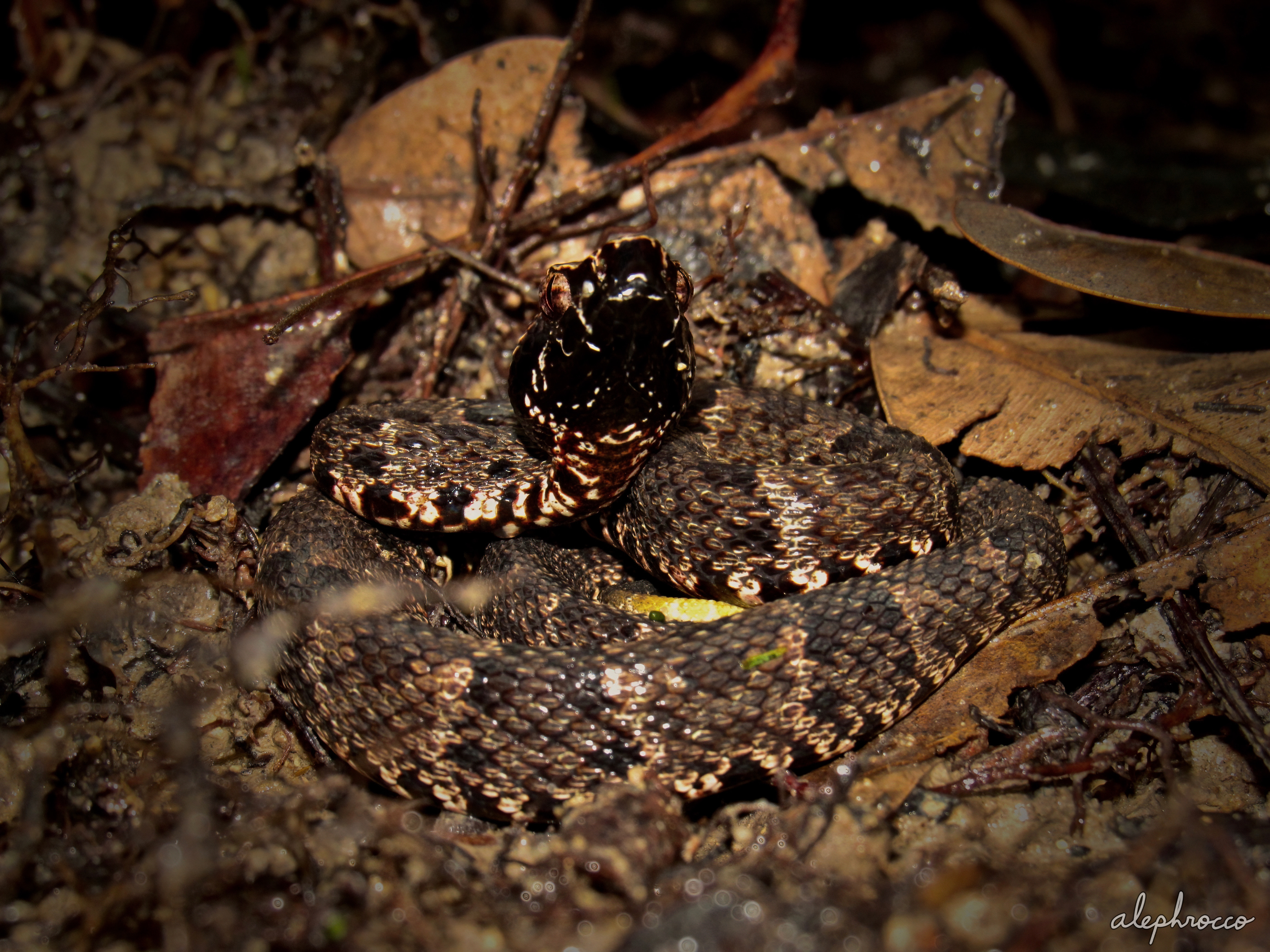
A young fer-de-lance (Bothrops asper) finds a snug ambush spot in the leaf litter, tightening its coils ever so slightly with my approach. This species is by far the most common viper in lowland tropical rainforests of the New World. Their resilience to anthropogenic degradation of habitat, generalist diet, and high reproductive rates allow them to maintain relatively stable populations, even in the face of direct human persecution. The same cannot be said for the vast majority of reptiles and tropical vertebrates, even others in the Bothrops genus. In Spanish, B. asper is known by many names, the most common being terciopelo, which translates to “velvet,” referring to the snake’s smooth reticulated pattern. This viper species, together with B. atrox in South America, has always been an impactful one for me. Their unbelievable camouflage and at times volatile nature make them an ever-present thought when exploring the tropics. Even when traveling entirely out of their range to Australia and Africa, occasionally I would still get triggered by certain leaf arrangements on the ground that superficially resembled markings of the fer-de-lance. Somehow, no other snake species has left the same impression.

Terciopelos are nocturnal ambush predators that reside in places from the most concealed to out in the open, relying on their camouflage to remain undetected. When young, they are semi-arboreal and capable of moving through the low understory, but overall, B. asper is considered to be classically terrestrial viper. Juveniles mostly feed mostly on small ectotherms such as frogs and lizards, but will opportunistically consume arthropods. As they mature, their diet will shift to larger prey items such as rodents and birds. Despite the venom defense, terciopelos are still preyed upon by a variety of mammals, including coatis, raccoons, peccaries, tayras, cats, monkeys, and also predatory raptors and probably toucans. When still small in size, large arthropods (e.g., tarantulas, katydids, mantids) can even take them, as well as reptiles that are larger in body size. The yellow-tailed cribo (Drymarchon corais) and mussurana (Clelia clelia) and are two of the more specialist feeders on terrestrial vipers like Bothrops, the latter which is known to have considerable immunological adaptations for venom resistance.
Each terciopelo comes with its own flavor of patterns. Hourglass markings on the dorsum are a commonality, but the shapes and irregularities within are unique. The individual above seemed drab brown from afar, but a look up close revealed symmetrical dark splotches on its labial scales. A link between melanin deposition and parasite load is possible, whereby snakes more frequently exposed to infection become darker over time to limit bacterial/parasitic growth through the toxicity of those pigment molecules. Melanin-associated hormones may also incidentally bind to receptors on immune cells and result in an improved immune response (an example of pleiotropic effects). However, the functional and biological significance of color variation in Bothrops has not yet received attention.


Hognose vipers (Porthidium nasutum) feature less elaborate patterns than the terciopelo, making them more difficult for me to spot reliably. They also have the habit of resting underneath the top layer of the leaf litter and seem to be very sedentary, which doesn’t help! Owing to their exquisite camouflaging ability, hognose viper are successful ambush predators of lizards and frogs. The individual pictured above was easily the largest I have seen to date, yet from a distance it only looked like a suspiciously circular poop. A closer look revealed its gorgeous orange flair and deep red eyes. Because of the stout and short body of hognose vipers, their strikes are comical— with gusto they can propel most of their bodies off the ground, then quickly jut their heads between their coils when they land for protection.


Neonate terciopelos have a bright yellow tail tip that they undulate in the air to lure prey, and many Bothrops spp. are known to vibrate the tail against the substrate audibly as a predator deterrent. In Brazil, I was once alerted to the presence of a young B. atrox from its tail vibrations in the leaf litter (pictured above). Caudal luring behavior, on the other hand, is a dream of mine to observe in the wild, though it’s much more readily observed in captivity where animals are habituated to human interactions.


